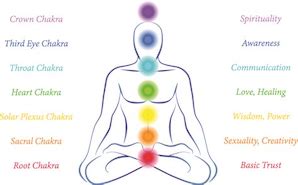
Use ours Chakras incense cones are perfect to open your mind.
Breathing DeeplyWhen done with intention, deep and conscious breaths can restore your chakras as well. Each inhales directs energy to your chakra, while each exhale allows awareness to settle into your chakras. This practice can open up your chakras and bring harmonic balance back to your mind, body, and soul.
A Beginner’s Guide To The 7 Chakras
- Root Chakra (Muladhara)
- Sacral Chakra (Swadhisthana)
- Solar Plexus Chakra (Manipura)
- Heart Chakra (Anahata)
- Throat Chakra (Vishuddha)
- Third-Eye Chakra (Ajna)
- Crown Chakra (Sahasrara)
Here are 7 signs that you could have blocked chakras:
- Difficulty concentrating. The third eye chakra provides energy for the intellect and our ability to see the truth. …
- Sleep problems. …
- Feeling helpless. …
- Not being able to express yourself. …
- Lacking motivation. …
- Closing yourself off to others. …
- Not being able to accomplish goals.
Chakra History And Traditions
As you aim to answer the question “what are the 7 chakras?”, it’s important to look at the historical origins of the 7 chakras. The concept traces back to early Hinduism and Buddhism. Hinduism in particular documents up to seven chakras. Meanwhile, Buddhism mentions just five. The etymology of the word partly comes from ancient Hindu texts, where it is used to mean “wheel”. It is also said to relate to the Greek word “Kuklos”, and the Anglo-Saxon word “hveohl”. These all designate a wheel of some sort.
These common origins all emphasize the interconnected and constantly shifting nature of the chakras.
If you’re asking yourself “are chakras real?”, consider that chakra history clearly illustrates the longevity and effectiveness of chakra-based traditions. These bodily focal points have been the subject of meditations, breathing techniques and mantras, all of which aim to use the chakras to detect, and address, physical and psychological problems.
